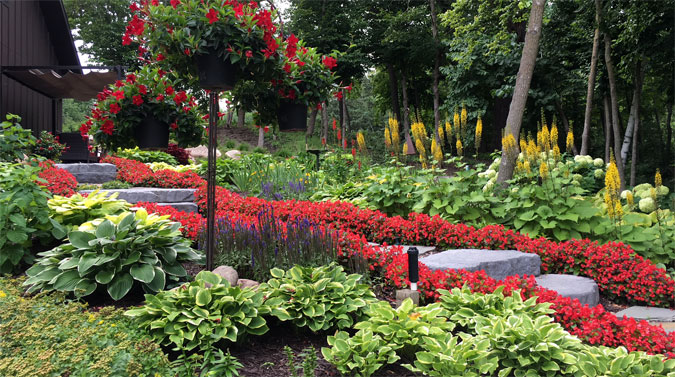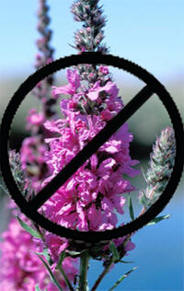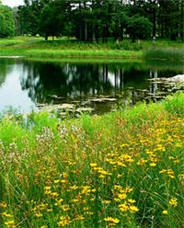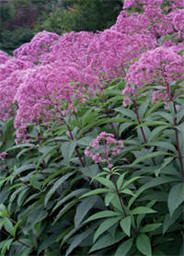|
|
 |
 |
| |
 |
| |
Invasive species are plants that
are not native to an area, which
are capable of causing harm.
While most non-native plant
species are not a problem, a
few, such as
Purple
Loosestrife (pictured
below) harm ecosystems and
impede water recreation. Purple
loosestrife, once sold and used
because of its beautiful
flowers, has invaded thousands
of Minnesota wetlands,
displacing native plants and
reducing food and habitat for
native species.
Other
non-native plants, such as
Yellow Iris and
Pink Water Lilies,
have spread in a few Minnesota
waters and appear to have
invasive characteristics. Once
introduced, invasive species can
spread to new areas and can
rarely be eliminated. Once
established, the costs to reduce
their harmful impacts can be
considerable.
|
|
|
|
Minnesota Prohibited
Invasive Species may
not be sold, purchased, or
possessed in Minnesota.
Nevertheless, some of these
species are available for sale
through catalog and Internet
sales. If you see any Minnesota
Prohibited Invasive Species for
sale in Minnesota, please report
it to the DNR. |
|
|
 |
 |
|
Prohibited
Invasive Aquatic
Plants |
 |
- Ambulia (Limnophila
sessiliflora)
- Flowering rush (Butomus
umbellatus)
- European frogbit
(Hydrocharis morsus-ranae)
- Indian swampweed
(Hygrophila polysperma)
- Purple loosestrife
(Lythrum salicaria, Lythrum
virgatum and all cultivars)
(pictured on the left)
- Watermoss, Giant
salvinia, caterpillars
(Salvinia molesta, Salvinia
auriculata)
- Water Velvet (Azolla
pinnata)
|
 |
|
|
|
|
|
| |
 |
 |
Planting in a
Natural Water
Native species
may be planted in
natural waters,
but a permit is needed
to plant below the
ordinary high water line
in “public” waters.
If you wish to plant in
a natural water, please
contact the DNR Info
Center (toll-free
1-888-646-6367) to find
out if the water body is
public, to determine if
your plants are natives,
and to obtain a permit. |
|
| |
 |
 |
|
Native
Plants for
Landscaping &
Restoration in
MN
(pdf) |
Native plant
communities are
groupings of
many plant
species that
occur naturally
in a given
environment.
It is
important for
shoreline owners
to understand
the role of
native plants
and the
difference
between native,
non-native, and
invasive
non-native
species.
Joe Pye Weed
(pictured) is
one of
Minnesota's
royal native
species. |
|
|
|
|
|
|
|
| |
|
What Every Gardener Should Know
(pdf) |
|
Important information for the
water gardener and shoreline
restorer. |
|
|
|
Native Plant
Encyclopedia
(pdf) |
|
|
|
Minnesota Handbook to
Aquatic Invasive Species
(pdf) (takes a little while to
load - big file) (but worth the
wait). |
|
|
| |
| If you have
questions about planting near the
water's edge, need the assistance of a
Water Planner or Shoreline Technician,
or to obtain a permit to excavate,
contact the Douglas County Land &
Resource Management Office @
320-762-3864. |
| |
| |
| |
| |
|
|
|
|

